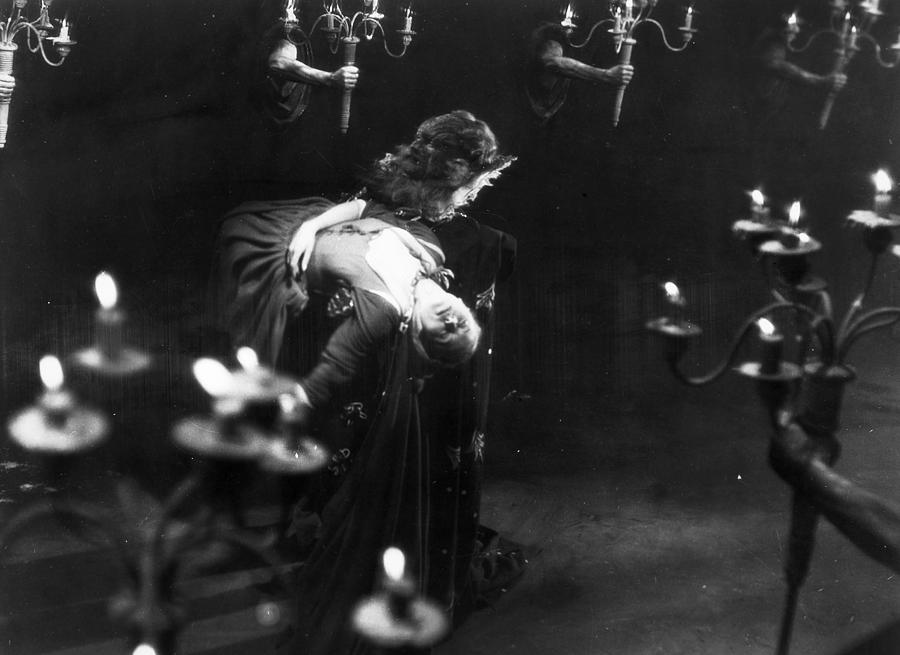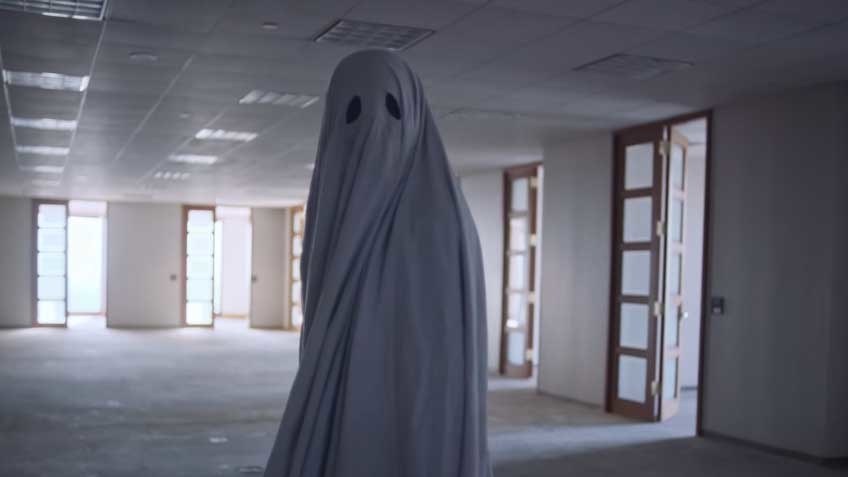Director + Writer: Jean Cocteau
Music: Georges Auric
Il était une fois...
Ok, this creature feature won my heart as soon as Belle wanders into a dark castle full of disembodied arms holding candles aloft. Aesthetically, I got everything I needed in that one sequence. Some of the narrative camera-work in Jean Cocteau’s 1946 Beauty and the Beast looks closer to the theatre than cinema, but Cocteau’s poetic sensibilities are also sharp to the art historical moment. Cocteau kept company with the Surrealists, Pablo Picasso, and Gertrude Stein, so there’s plenty of formal dazzling. The set designs were modeled after the engravings of Gustave Dore, while Belle’s scenes with her family draw more from Vermeer.
The Beast is deliciously gaudy in his attire, his costume jewelry glittering in black and white. The glass ornaments that hang from his waist resemble something between icicles and shards of broken mirror, so that he cannot fail to look on himself—though it can only amount to a fragmented sum. There is the necessary cast of magical objects (a glove to transport the wearer; a white horse named Magnificent; and a key whose misuse could kill the Beast) and dark suggestions. Belle occasionally finds mauled animals on the estate, presumably her captor’s doing. We see the Beast staggering around his enormous home with smoking hands, our evidence that he has killed.
Both the beautiful, arrogant Avenant and the powerful-but-ashamed Beast are played by the same actor, Jean Marais. This visual double underscores a shared trait: both are too possessive, too flowery in their need of Belle, as if their love follows mysterious laws and has little to do with her. It's telling that Avenant's impassioned speech to Belle on her father's doorstep is a straight shot on his (admittedly flawless) face as he moves through moods and realizations, needing no answer from her. When we finally get a countershot of Belle's reaction, she is weeping with her gaze downcast, as he says, "Belle, I assure you, if that monster suffered as I do, he would rush to your side and carry you off with him. I assure you, he's forgotten you." For what it's worth, the Beast at least extends a gesture of trust when he allows Belle to leave the castle for a week—even if it is a remote rite with strings attached, as the laws of fairy tales always are.
Avenant and Belle's brother Ludovico steal Magnificent and take off for the Beast's castle intent on killing him. Belle’s miserable sisters give Avenant the magic key, and only as they gallop away does the younger sister cry out for her brother. Have we sent them to their deaths? she asks her sister uneasily. The older sister calls her a fool and inspects the enchanted mirror sent by the Beast. When the younger sister looks at her reflection, she sees herself as an old maid, sad and surprised by the failure of her beauty. When the older sister looks, she sees herself as a rhesus monkey. When they give the mirror to Belle, she rubs against it like a twitterpated housecat before it shows her an image of the ailing Beast.
There are moments of BDSM subtext to this movie (and, one could argue, to its fairytale of origin) that don’t require a total pervert to say, “Wait...what?” Painted broadly, it has to do with the negotiation of power exchange between Belle, the smart and powerful captive, and Beast, her devoted captor. Sure, some of the suggestive dialogue could be due to translation issues, wobbly fairytale logic, or the need to cloak more straightforward dirty talk from studios and sensors. (Did France even have sensors, those kinky libertines?) Anyway, I hit pause when the Beast snapped, Don't call me Sir! I'm called the Beast. I don’t like compliments. Don’t try to understand why. Later, Belle will urge the Beast to cling to life and chase death away (any doctor’ll tell you death is largely a matter of will power) and the Beast will say, If I were a man, perhaps I could do as you say. But poor beasts who wish to prove their love can only grovel on the ground and die. Those French really know romance.
When Belle returns to the castle, she finds the Beast dying (of thirst? of love? of hate?) on the riverbank like a hairier, subverted Narcissus. Two nearby swans hiss at Belle as she approaches. I can’t prove this was an accident, but I suspect working with the constraints of early cinema allows for beautiful accidents of its kind. I don’t want to bore you with the math but, basically, More live beasts – control = an art of chance and decisive moments. I’m probably preaching to the choir given that the French gave us Henri Cartier-Bresson and Jean Vigo, but I am more impressed by the hunt for symbols through film than those manufactured with a computery sheen.
Cocteau’s film is lucky that it is so charming, because the “special effects” employed are very dated. In the end, Cocteau’s most poetic moments are his least fussy. Similarly, we remember and watch film adaptations of Jeanne-Marie Leprince de Beaumont’s rewritten “Beauty and the Beast” over Gabrielle-Suzanne Barbot de Villeneuve’s original because de Beaumont pared down the tale to a simpler cast of characters and transgressions, lending the story an archetypal spareness. Cocteau adds a layer of myth to poetic justice when Avenant is killed by a statue of Diana (moon-goddess, huntress, and protector of wild animals) as he tries to break into the Beast’s treasure. Upon receiving Diana’s arrow in his back, he turns into a beast himself. In the same moment, the dying Beast is revived and healed. What is it, Belle? the transformed prince (played by Jean Marais, again!) asks, It's almost as if you miss my ugliness.
She explains that he looks like someone she used to love.
Did he know? The Not-Beast asks her.
No.
But you did love the Beast?
Yes, she says. He is cheered, though no real jealousy ever broke through. This strikes me as relatively progressive for 1946 given that one-true-love narratives are still abundant in our understanding of happily ever after, not to mention the princess-factories of the movie industry. Prince, um, Not-Beast is very willing to leave Belle’s past to her, which is more than I can say for a lot of my exes.
The act of looking is central to Cocteau’s film. Receiving a look and being seen is often intolerable to the Beast. I identified with this feeling not only as a lifelong sufferer of anxiety, but also as someone who has been, at times, grotesquely unwell. Suffering is taxing enough without the addition of shame. Belle’s father is welcome to all the Beast’s riches, until he picks a rose for his daughter. The Beast loves the roses more than anything (is this for their beauty, which must torment him? or because they are beautiful things that cannot reject him?) and the price for their theft is death.
When Belle takes her father’s place at the castle, the Beast’s resolve is weakened. In a pivotal scene, he tells Belle that her look burns like fire while his body is, itself, burning. Plenty of the film's symbolism is less decipherable, such as Belle crying diamonds as her father plucks them from her eyes. I suspect the underlying message is that self-loathing is ugly and a barrier to love, though I prefer the surreal moments when metaphors become opaque. The familiarity of the story makes it easy to forget the extent of the Beast’s pain, that when the Beast is calling Belle’s name he is also crying BEAUTY, BEAUTY, BEAUTY.
FINAL THOUGHTS
- French stepsisters must be the worst of evil stepsisters. Fiction-wise I haven’t wanted to punch a haughty bitch this badly since Joffrey.
- Yes, the Beast is more cat-like than monstrous. Overall, I'd say the Beast’s fearsome demeanor earns him "bobcat" at best.
- I keep thinking about the mirror that allows the Beast and Belle to see one another. It is an easy leap for us in the digital age as we are used to texting, facetime, and all sorts of willful surveillance. But where did this image come from that it reached Gabrielle-Suzanne Barbot de Villeneuve in 1740? In art historical hindsight, cinema looks like a logical extension of the invention of photography (~1827) but this magic mirror and mythical objects like it would suggest the moving image existed in our literary imagination before the still photograph ever captured it.








